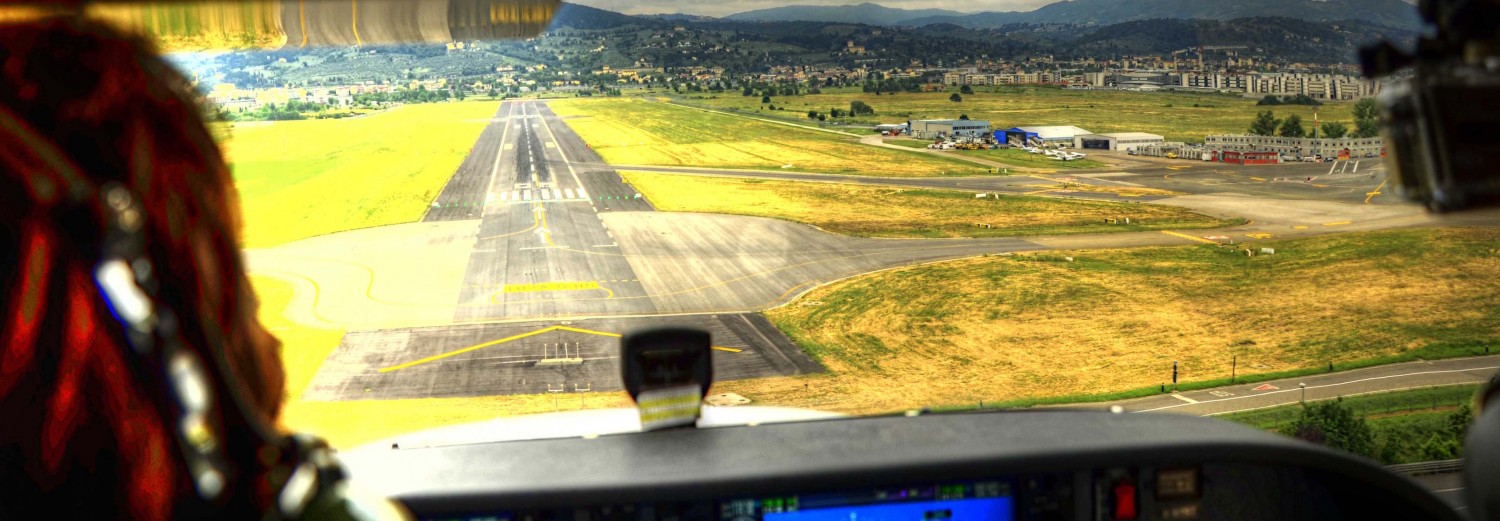
Practice, experience, and common sense can greatly increase the chances, but despite our best intentions, sometimes something can go wrong, making us regret being in the air, eager to be on the ground “it’s better being down there, wishing you were up here, than being up here, wishing you were down there!“. Let’s see how to deal with emergency situations in the safest possible manner.
How can you define an emergency situation? At first glance it may seem a simple question, but upon reflection it may not be so easy. An engine failure can be defined as an emergency? And if it happens at 5000ft agl, with perfect weather and a lot of suitable landing spaces? During an emergency the context in which this occurs is all. Conditions can make a non-event in the worst nightmare (imagine the same engine failure at 300ft agl during the initial climb, at night on a frozen lake). Of course, in most cases, the distinctions are more subtle. We will use the term emergency, but most of the problems faced by the pilots can be defined simply as abnormal situations, not hazardous situations. It’s important to keep in mind this distinction. The statistics are full of examples of pilots who have managed to turn abnormal situations in emergency cases. Whatever the situation, the basic principle of the pilot should be: First, do not hurt yourself.
You are in cruise, when suddenly there is a problem. What to do? The first step should be to make a very simple assessment:
What’s wrong?
What is the level of criticality?
How much time do I have?
The most difficult situation is the one that requires immediate action. An engine failure shortly after takeoff, or a fault in the oxygen to 25.000ft, are examples for which the reaction of the pilot must be immediate. In training, special attention should be given to this type of emergency that requires immediate action as a briefing before take-off in the event of engine failure in the initial climb.
Faced with an emergency, unprepared pilots have a tendency to make their way through several mental stages (shock, denial, acceptance) before finally taking the appropriate actions, thus wasting valuable time. In critical situations, those extra seconds can mean the difference between success and something much worse.
(to be continued)

Pratica, esperienza, e buon senso possono aumentare di gran lunga le probabilità, ma nonostante le nostre migliori intenzioni, a volta qualcosa può andare storto, facendoci rimpiangere di essere in volo, desiderosi di essere a terra “it’s better being down there, wishing you were up here, than being up here, wishing you were down there!” Vediamo come affrontare situazioni di emergenza nella maniera più sicura possibile.
Come si può definire una situazione di emergenza? A prima vista può sembrare una domanda semplice, ma riflettendoci può non essere così facile da definire. Una piantata motore può definirsi un’emergenza? E se succede a 5000ft agl, con tempo perfetto e una ventina di spazi idonei di atterraggio nel raggio di planata? Durante un’emergenza il contesto in cui questo si verifica è tutto. Le circostanze lo possono rendere un non-evento o il peggiore degli incubi (immaginiamo la stessa piantata motore a 300ft agl durante la salita iniziale, di notte su un lago ghiacciato). Naturalmente nella maggior parte dei casi, le distinzioni sono più sottili. Useremo il termine di emergenza, ma la maggior parte dei problemi che devono affrontare i piloti possono definirsi più semplicemente come situazioni anormali, non quindi come una situazione di pericolo immediato o peggio, mortale. E’ importante mantenere in mente questa distinzione. Le statistiche sono piene di esempi di piloti che sono riusciti a trasformare situazioni anomale in casi di emergenza. qualunque sia la situazione, il principio base del pilota dovrebbe essere: Primo, non farti del male.
Stai volando in crociera quando improvvisamente si verifica un problema. Cosa fare? Il primo passo dovrebbe essere quello di effettuare una valutazione iniziale molto semplice:
Che cosa c’è che non va?
Qual’è il livello di criticità?
Quanto tempo ho a disposizione?
La situazione più difficile è quella che richiede un’azione immediata. Una piantata motore subito dopo il decollo, o un guasto all’impianto dell’ossigeno a 25.000ft, sono esempi per i quali la reazione del pilota deve essere immediata. Nell’addestramento, particolare attenzione dovrebbe essere dedicata a questo tipo di emergenza che richiede azioni immediate come un briefing prima del decollo nel caso di piantata motore nella salita iniziale.
Di fronte a una situazione di emergenza, i piloti impreparati hanno la tendenza a farsi strada attraverso diverse fasi mentali (shock, rifiuto, accettazione) prima di intraprendere finalmente le appropriate azioni, sprecando così tempo prezioso. In situazioni critiche, quei secondi in più possono significare la differenza tra una buona riuscita e qualcosa di molto peggio.
In volo sul Lago Trasimeno, con l’ AFAB

